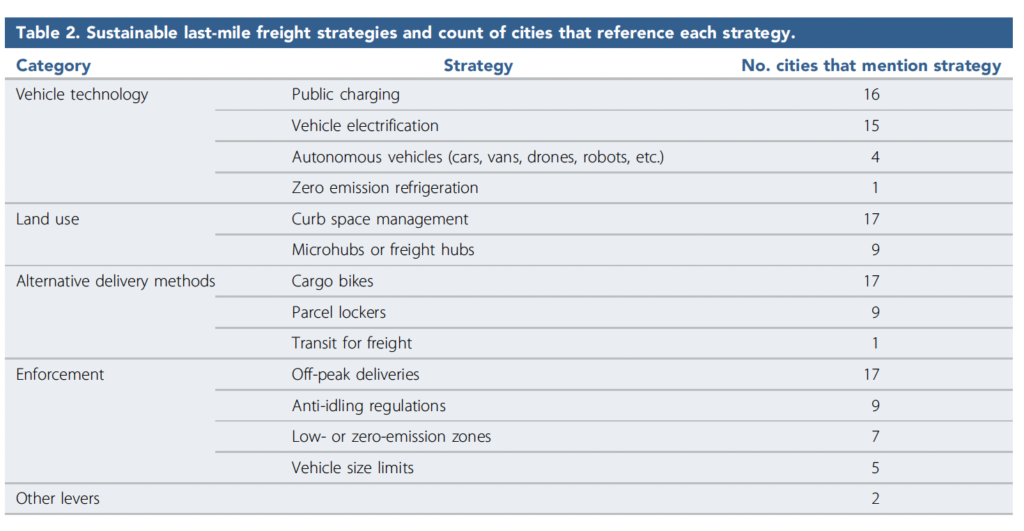In the US, the transportation sector is the primary contributor to greenhouse gas emissions. Cities nationwide are responding to this challenge by devising climate action and sustainability plans to mitigate transportation-related carbon footprints. However, amidst this effort, the burgeoning last-mile delivery sector, a vital component of urban transport, remains largely overlooked regarding emissions reduction strategies.
A study by Urban Freight Lab delves into the extent to which major U.S. cities are addressing or developing sustainable practices for urban freight, shedding light on the current landscape of urban freight planning.
Half of US cities have urban freight plans
The analysis reveals a significant gap in urban freight planning across municipal agencies. While some cities have made strides in formulating comprehensive plans tailored to the industry’s needs, most are only beginning to explore this domain. Notably, less than half of the cities surveyed have factored last-mile freight into their sustainability agendas, with a mere 29% expressing intentions to allocate resources toward this objective.
Implications for Action
Urban freight planning remains in its infancy, urging cities to accelerate efforts in this critical area. Municipalities lacking dedicated last-mile freight plans can draw valuable insights from those pioneering pilots and data collection initiatives. Additionally, fostering collaboration with delivery companies is paramount, as understanding stakeholder perspectives is foundational to effective urban freight planning. By initiating dialogue and partnership with the private sector, cities can better understand the environmental impact of last-mile freight activities within their urban landscapes.
Challenges and Trends
The surge in last-mile goods delivery, propelled by shifts in consumer behavior and the proliferation of e-commerce, has exacerbated urban congestion and environmental concerns. The resultant air and noise pollution and greenhouse gas emissions pose immediate health risks and long-term climate implications. As cities brace for a projected 30% increase in goods-related vehicle traffic over the next decade, addressing the challenges of sustainable urban freight planning becomes imperative.

The study focuses on unpacking the state of sustainable last-mile freight planning in US cities, probing into how urban freight is defined, what emission reduction strategies are under consideration, and the frequency of freight-related considerations in urban planning documents. By thoroughly examining relevant policy documents, the researchers aim to provide insights into the prevailing landscape of urban freight planning and highlight areas for future interventions.
Need for sustainable urban freight planning
As urban centers grapple with the multifaceted challenges posed by last-mile delivery, the need for comprehensive and sustainable urban freight planning has never been more pressing. By prioritizing emissions reduction strategies and fostering collaboration between public and private stakeholders, cities can pave the way towards a more efficient, equitable, and environmentally conscious urban freight ecosystem. This research is a pivotal step in understanding the current state of affairs and charting a course toward a more sustainable future for urban freight in the US.
Source: Urban Freight Lab
Maxner, T., Dalla Chiara, G., & Goodchild, A. (2024). The State of Sustainable Urban Last-Mile Freight Planning in the United States. Journal of the American Planning Association, 1–14. https://doi.org/10.1080/01944363.2024.2324096
